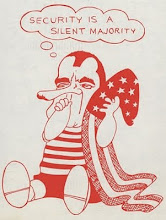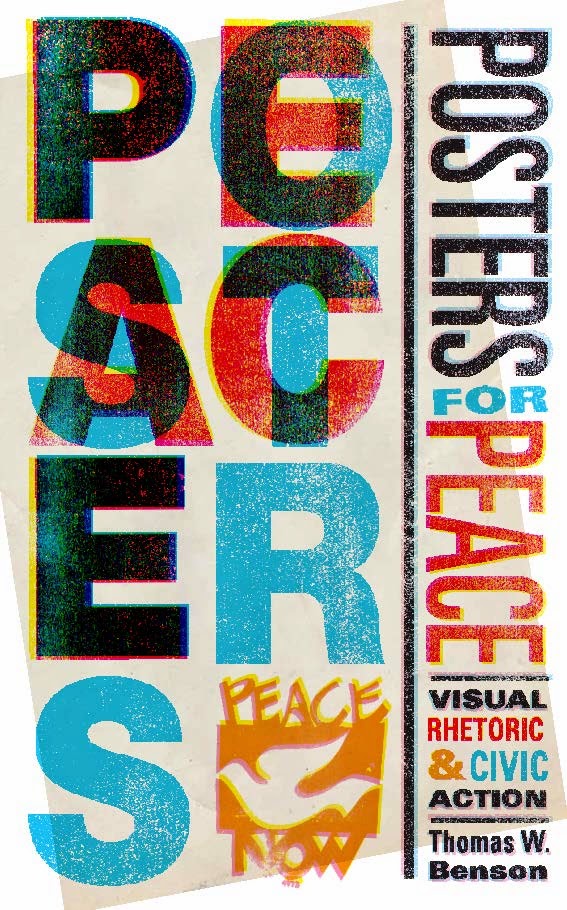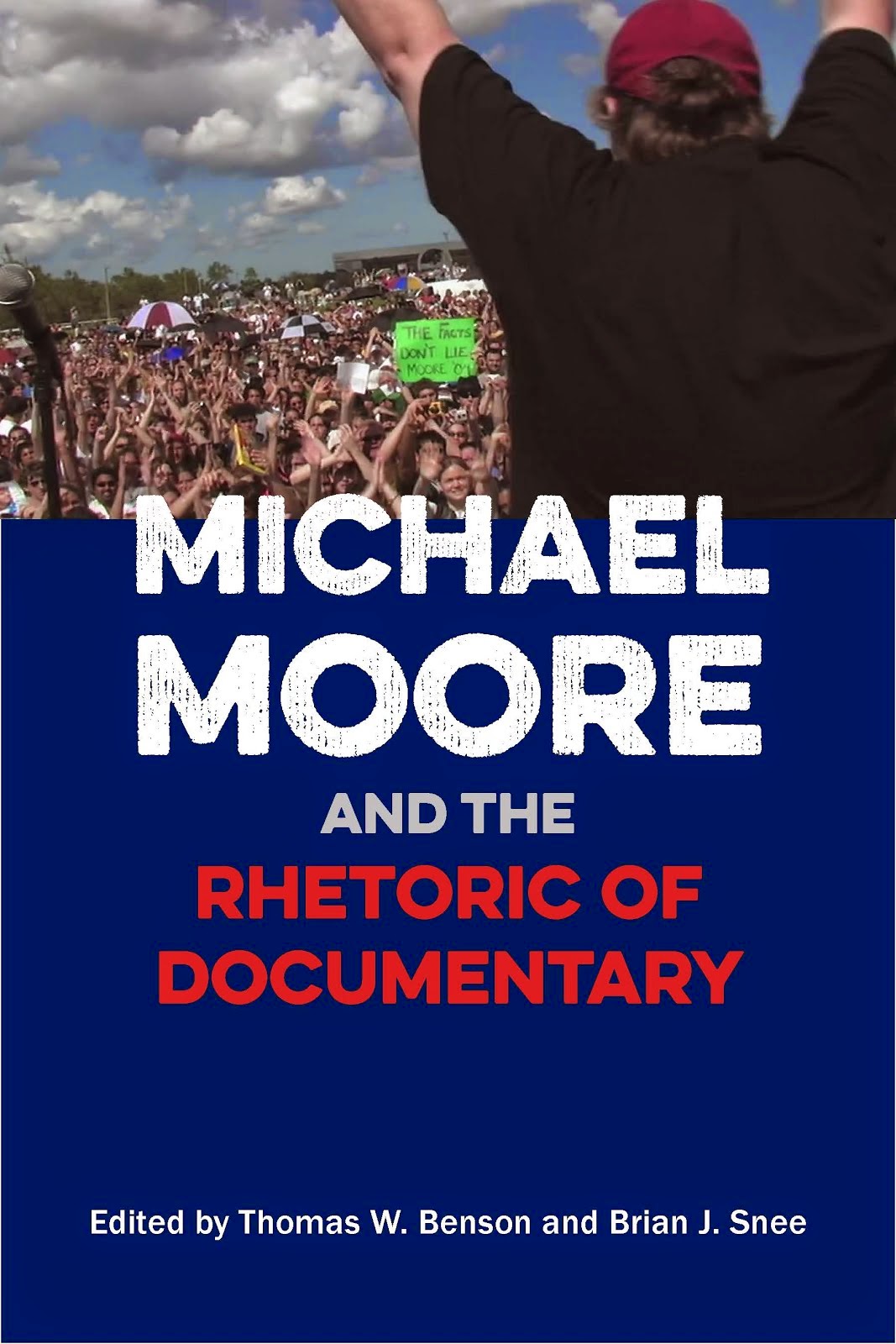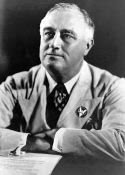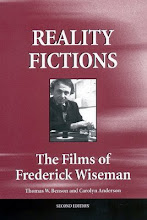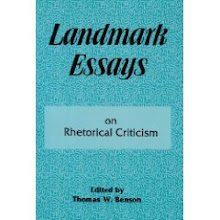RALEIGH, N.C. – “This lady right here makes Rocky Balboa look like a pansy,” said Governor Mike Easley, D-N.C., today, referring to Hillary Clinton. “There’s nothing I love more than a strong powerful woman.”Meanwhile, North Carolina Republicans were broadcasting a TV spot attacking two Democrats who had endorsed Barack Obama, arguing that Obama's former association with preacher Jeremiah Wright -- that drop of angry black man -- made the whole batch of them "too extreme for North Carolina."
Clinton accepted a key endorsement from Easley today, as she struggles to stay alive in this nomination contest. She is down in the polls in both North Carolina and Indiana, so any political victory is a big one.
“I am thrilled to accept his endorsement,” she said. “Of course, it’s politically very meaningful but even more than that, it is great to have someone who really understands what we have to do to transform our country.”
Wednesday, April 30, 2008
Sex and Race in North Carolina
Hillary Clinton was endorsed yesterday by the Democratic governor of North Carolina, Mike Easley. Here's the story from Fernando Suarez reporting for CBS:
Tuesday, April 29, 2008
Wills on Obama and Lincoln
Don't miss the precise and instructive essay by Garry Wills comparing Abraham Lincoln's Cooper Union address with Barack Obama's Philadelphia speech on race. It appears in the May 1 issue of the New York Review of Books.
Garry Wills, "Two Speeches on Race," New York Review of Books, 1 May 2008
In his prose, Obama of necessity lagged far behind the resplendent Lincoln. But what is of lasting interest is their similar strategy for meeting the charge of extremism. Both argued against the politics of fear. Neither denied the darker aspects of our history, yet they held out hope for what Lincoln called here the better "lights of current experience"—what he would later call the "better angels of our nature." Each looked for larger patterns under the surface bitternesses of their day. Each forged a moral position that rose above the occasions for their speaking.
Garry Wills, "Two Speeches on Race," New York Review of Books, 1 May 2008
Voter ID
Yesterday the Supreme Court released its decision on the Indiana law requiring a state-issued photographic identification in order to vote. The law passed in the Indiana legislature with unanimous support from the Republican majority, which argued -- wink, wink -- that the measure would prevent voter fraud. No cases of Indiana voter fraud that might have been prevented by the law were ever found.
Six justices voted to uphold the law, writing two separate opinions. In the opinion of Alito, Thomas, and Scalia: "JUSTICE SCALIA, joined by JUSTICE THOMAS and JUSTICE ALITO, was of the view that petitioners’ premise that the voter - identification law might have imposed a special burden on some voters is irrelevant. The law should be upheld because its overall burden is minimal and justified. . . . The different ways in which Indiana’s law affects different voters are no more than different impacts of the single burden that the law uniformly imposes on all voters: To vote in person, everyone must have and present a photo identification that can be obtained for free. This is a generally applicable, nondiscriminatory voting regulation. The law’s universally applicable requirements are eminently reasonable because the burden of acquiring, possessing, and showing a free photo identification is not a significant increase over the usual voting burdens, and the State’s stated interests are sufficient to sustain that minimal burden."
What we appear to have here is a misleading empirical argument (that the photo id is free and easy to obtain). In fact anyone who does not have a driver's license would either have to get one or apply for a special voting identification, to obtain which would require a birth certificate -- and it does take some time and money to go through that process, according to experts. The predictable result is that the elderly and the poor will be less likely to be able to vote. That is not an equal burden as it is experienced in practice. Hence, the law is not "nondiscriminatory" in its effect--and in fact it is pretty clearly designed to have just this discriminatory effect, since those poor and elderly voters would be more likely to vote Democratic than Republican. That's why the law was proposed.
According to a New York Times editorial, "Democracy was the big loser in the Supreme Court on Monday." ("The Court Fumbles on Voting Rights," New York Times, April 29, 2008.)
Six justices voted to uphold the law, writing two separate opinions. In the opinion of Alito, Thomas, and Scalia: "JUSTICE SCALIA, joined by JUSTICE THOMAS and JUSTICE ALITO, was of the view that petitioners’ premise that the voter - identification law might have imposed a special burden on some voters is irrelevant. The law should be upheld because its overall burden is minimal and justified. . . . The different ways in which Indiana’s law affects different voters are no more than different impacts of the single burden that the law uniformly imposes on all voters: To vote in person, everyone must have and present a photo identification that can be obtained for free. This is a generally applicable, nondiscriminatory voting regulation. The law’s universally applicable requirements are eminently reasonable because the burden of acquiring, possessing, and showing a free photo identification is not a significant increase over the usual voting burdens, and the State’s stated interests are sufficient to sustain that minimal burden."
What we appear to have here is a misleading empirical argument (that the photo id is free and easy to obtain). In fact anyone who does not have a driver's license would either have to get one or apply for a special voting identification, to obtain which would require a birth certificate -- and it does take some time and money to go through that process, according to experts. The predictable result is that the elderly and the poor will be less likely to be able to vote. That is not an equal burden as it is experienced in practice. Hence, the law is not "nondiscriminatory" in its effect--and in fact it is pretty clearly designed to have just this discriminatory effect, since those poor and elderly voters would be more likely to vote Democratic than Republican. That's why the law was proposed.
According to a New York Times editorial, "Democracy was the big loser in the Supreme Court on Monday." ("The Court Fumbles on Voting Rights," New York Times, April 29, 2008.)
Pentagon propaganda

It is a little over a week since David Barstow reported in the New York Times on a Pentagon propaganda operation to persuade the American people to support the war in Iraq and Afghanistan, and the prison operation at Guantanamo, by secretly briefing retired senior military officers, who were recipients of Pentagon favors as employees of military contractors, who were then planted as paid consultants at major news organizations. This sort of government propaganda is illegal in the United States, precisely because it corrupts democratic decision making before it even starts.
Yesterday the Pentagon announced it was ending the propaganda program.
David Barstow, "MESSAGE MACHINE; Behind TV Analysts, Pentagon's Hidden Hand," New York Times, April 20, 2008.
"Pentagon Suspends Military Analysts Program," Huffington Post, April 28, 2008. (image from Huffington Post)
Saturday, April 26, 2008
Pop Mafia
 This photograph shows graffiti on the wall of the cathedral in Palermo, Sicily, from the Italian newspaper Corriere della Sera. An officer seems to have a somewhat ambivalent attitude about this crime about a criminal, and about having to stand there having his picture taken with it. The face in the four pop-art portraits is that of Matteo Messina Denaro, a fugitive Mafia boss. Note the dollar signs at the bottom of the painting. Corriere is a national newspaper in Italy, but it is also a northern newspaper and perhaps this lends the photograph an additional edge of comedy and mockery for its Italian readers--a common attitude in Italy when looking South.
This photograph shows graffiti on the wall of the cathedral in Palermo, Sicily, from the Italian newspaper Corriere della Sera. An officer seems to have a somewhat ambivalent attitude about this crime about a criminal, and about having to stand there having his picture taken with it. The face in the four pop-art portraits is that of Matteo Messina Denaro, a fugitive Mafia boss. Note the dollar signs at the bottom of the painting. Corriere is a national newspaper in Italy, but it is also a northern newspaper and perhaps this lends the photograph an additional edge of comedy and mockery for its Italian readers--a common attitude in Italy when looking South.(photo: Ansa, from Corriere della Sera, 26 April 2008)
followup story in Ansa
Tuesday, April 22, 2008
Primary
 Today is primary election day in Pennsylvania. I voted at about 9:00 this morning. At noon and again at 5:00 I took breaks from my work to walk, and made sure to pass the new church at the end of the block that is now our polling place. On my 5:00 o'clock walk past the polling place, I was handed this flier by an eight-year-old boy who was there with his father. The boy told me that he had written it himself.
Today is primary election day in Pennsylvania. I voted at about 9:00 this morning. At noon and again at 5:00 I took breaks from my work to walk, and made sure to pass the new church at the end of the block that is now our polling place. On my 5:00 o'clock walk past the polling place, I was handed this flier by an eight-year-old boy who was there with his father. The boy told me that he had written it himself.Eyes Wide Open
 "Eyes Wide Open" is "An Exhibition of the Human Cost of the Iraq War," created by the American Friends Service Committee. The exhibit has appeared in a number of cities since 2004 and is the subject of a documentary film. The rhetoric of the American Friends is unusual in its combination of frankness in opposition to the war and its steady sense of the human dignity of all involved. The AFSC goes beyond advocacy to engage in service to survivors and victims.
"Eyes Wide Open" is "An Exhibition of the Human Cost of the Iraq War," created by the American Friends Service Committee. The exhibit has appeared in a number of cities since 2004 and is the subject of a documentary film. The rhetoric of the American Friends is unusual in its combination of frankness in opposition to the war and its steady sense of the human dignity of all involved. The AFSC goes beyond advocacy to engage in service to survivors and victims.The boots seem to invite contemplation. They are laid out as graves might be, with a name for each pair. Their appeal to shared, humane reflection in the open exhibit space calls to mind the AIDS Quilt. The quilt suggested the effort of its many lovingly made panels and the individuality of imagination and experience, as well as the now useless comfort that a quilt might bring to an ailing person. The quilt seems to say, over and over, "it's to late for him, for her, but not too late for the living." Some of this is suggested in the Eyes Wide Open project, but the boots have a different pattern of associations. The boots acknowledge the boots-on-the-ground military commitment of the dead, echoing funerary practices such as the empty boots in the stirrup of a dead officer. The boots suggest the imposed, manufactured, military-issue regularity of the soldier; the grounded, individual fact of the each pair of boots, with its stains and patterns of wear; and the absence of the owner, an absence suggesting both repose and utter violence.
McCain Font

There's a fascinating essay by Steven Heller in the New York Times for April 21 on the choice of type fonts for John McCain's campaign signs. He uses OPTIMA, a font based on Roman monuments, including Trajan's column. Optima is also the font used in Maya Lin's Vietnam Veterans' Memorial in Washington. Heller consults a variety of designers, who offer interesting histories of the type face and speculations about its power to communicate.
OpinionBy Steven HellerPublished: April 21, 2008What the candidate's typeface says about him and his campaign.
Heller's article on McCain is a counterpart to his earlier article on the Obama campaign's choice of GOTHAM font.
Pennsylvania Primary


Today is the Pennsylvania primary election. Here at Penn State we have had visits from Barack Obama and, in separate visits, from Hillary, Bill, and Chelsea Clinton.
In the New York Times this morning, Ariel Alexovich assembles the last-minute Hillary Clinton ad warning us of Osama, to which he adds a clip of Bill Clinton warning in 2004 against candidates using scare tactics and an Obama ad replying to the Hillary ad.
"The Caucus: In New Ad, Clinton Says She Can Stand the Heat"By Ariel AlexovichPublished: April 21, 2008The heat, as depicted in Hillary Rodham Clinton's latest ad, includes national catastrophes like the Great Depression, Pearl Harbor, the gas crisis of the 1970s, Osama bin Laden and Hurricane Katrina -- all of which are shown in a dramatic video montage.
photos are from the candidates' web sites
Sunday, April 20, 2008
The Senses of Rhetoric
This blog is intended as a place to engage in informal, short reflections on rhetoric in its various senses, and as it addresses our various senses. Many of the best critical blogs that I try to keep up with are quite sensibly devoted to a single medium or genre. I would like to try my hand, in this exercise, at a deliberately mixed collection of forms. Perhaps that's partly because of my own restlessness or short attention span, but I'd like to think that it is responsible to a notion of rhetoric as always mixed and always present in human action.
In 1978 I published an essay called "The Senses of Rhetoric: A Topical System for Critics," in the Central States Speech Journal as it was then called--it is now called Communication Studies. In that essay I attempted to articulate some starting points for the rhetorical analysis of texts in a variety of media and genres, both political and cultural. The idea of the topical approach was to permit theoretical rigor without invoking categorical blindness, a problem at the core of the rhetorical tradition. In the rhetorical tradition, a topic is a place where arguments and ideas may be found, a starting point for the process of invention. These places are sometimes "commonplaces" of tacit cultural knowledge, sometimes analytical promptings.
In 1978 I published an essay called "The Senses of Rhetoric: A Topical System for Critics," in the Central States Speech Journal as it was then called--it is now called Communication Studies. In that essay I attempted to articulate some starting points for the rhetorical analysis of texts in a variety of media and genres, both political and cultural. The idea of the topical approach was to permit theoretical rigor without invoking categorical blindness, a problem at the core of the rhetorical tradition. In the rhetorical tradition, a topic is a place where arguments and ideas may be found, a starting point for the process of invention. These places are sometimes "commonplaces" of tacit cultural knowledge, sometimes analytical promptings.
Thomas W. Benson. "The Senses of Rhetoric: A Topical System for Critics." Central States Speech Journal 29 (1978): 237-250.
Subscribe to:
Posts (Atom)
